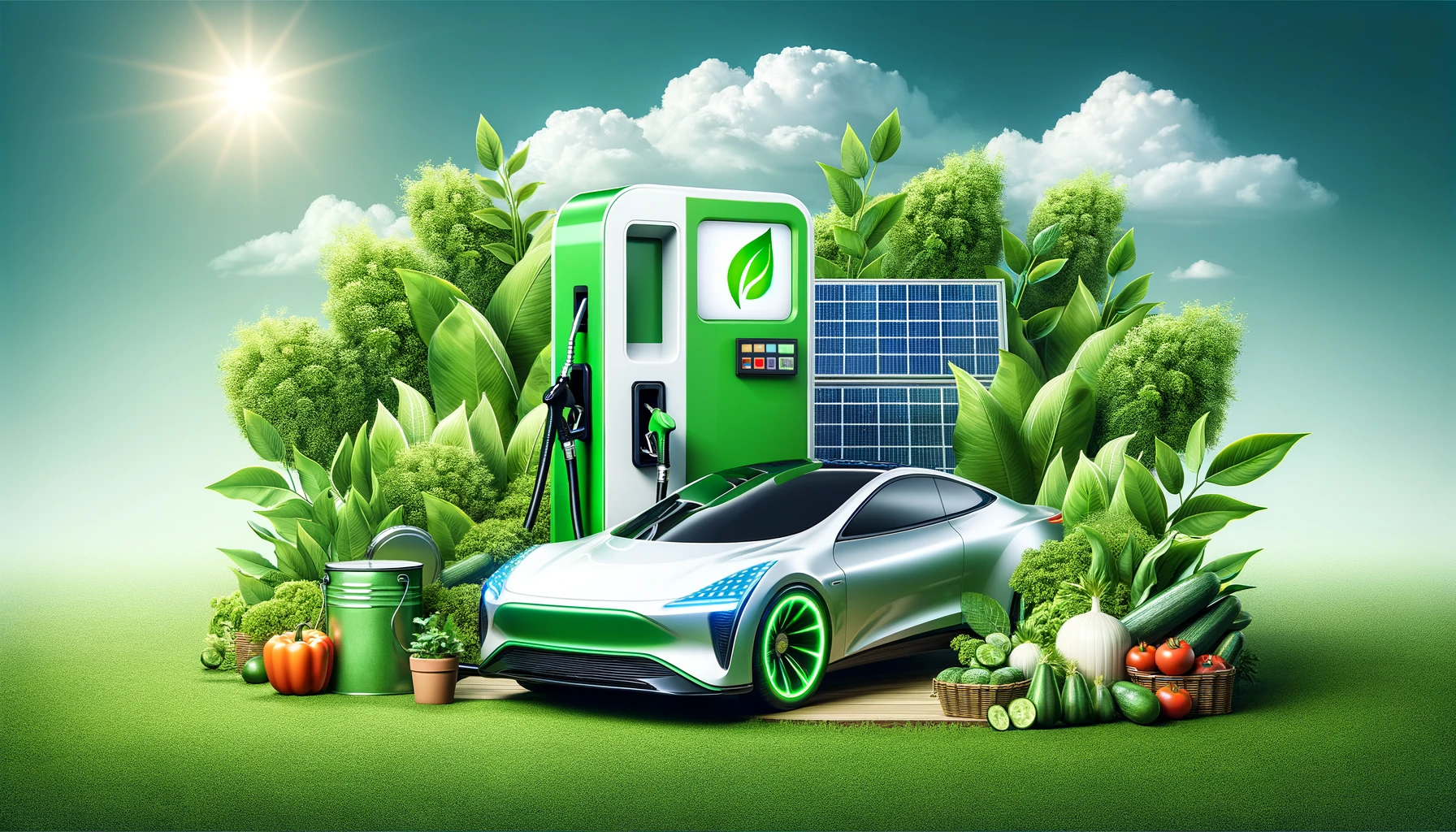Image generated in ChatGPT
In today’s world, the need for sustainable and environmentally friendly fuel options is more pressing than ever. Hydrotreated Vegetable Oil (HVO) stands out as a viable alternative to traditional diesel.
Made from renewable resources, HVO significantly reduces greenhouse gas emissions, contributing to cleaner air and a healthier planet.
What is Hydrotreated Vegetable Oil?
Hydrotreated Vegetable Oil (HVO) is a renewable diesel fuel produced by treating vegetable oils or animal fats with hydrogen. Unlike traditional biodiesel, which chemically converts oils into esters, HVO uses a refining process that strips out impurities and oxygen.
The result is a pure, hydrocarbon-based fuel that looks and burns much like fossil diesel but comes from plant or animal sources. Because its molecular structure closely matches conventional diesel, HVO can be dropped straight into existing diesel engines—no retrofits or special blends required.
How Is HVO Made?
- Feedstock Collection: HVO can be made from many types of oils and fats—used cooking oil, soybean oil, palm oil, tallow, or even algae. Choosing waste or by-product streams (like used fryer oil) makes HVO especially sustainable.
- Hydrotreatment: In a refinery, feedstock is mixed with high-pressure hydrogen and passed over a catalyst at elevated temperature. This “hydrotreatment” step removes sulfur, nitrogen, and oxygen, saturating the carbon chains.
- Separation & Finishing: The treated oil is separated into gases (mainly water and light hydrocarbons) and a liquid diesel fraction. This fraction is then polished—filtered and treated—to meet strict diesel specifications (cetane number, cold-flow properties, flash point).
- Blending & Distribution: Finally, HVO may be blended with regular diesel or delivered as a pure (100%) product, depending on supply and regulations.
For a clear, industry-focused overview of this process, see Cummins’ HVO Explained.

Environmental Benefits
- Up to 90% Lower CO₂ Emissions: When made from waste oils, HVO can cut lifecycle carbon dioxide emissions by up to 90% compared to fossil diesel. Even with virgin vegetable oils, CO₂ savings of 50–70% are common.
- Reduced Pollutants: HVO emits very low levels of nitrogen oxides (NOₓ) and particulate matter (soot), helping cities meet air quality targets and reducing health risks.
- Biodegradability: In the unlikely event of a spill, HVO breaks down more quickly in soil and water, posing less risk to wildlife than conventional diesel.
Performance Advantages
- Higher Cetane Number: HVO typically has a cetane rating above 70 (versus 45–55 for fossil diesel), meaning it ignites more easily. Engines fire quicker, run smoother, and produce fewer vibrations.
- Superior Cold-Flow: Standard diesel can gel or thicken in cold weather. HVO stays fluid down to –40 °C, ensuring reliable starts and consistent injection in winter conditions.
- Stable Storage: Without oxygen or unsaturated bonds, HVO resists oxidation and microbial growth. It stores cleanly for years, reducing filter blockages and maintenance costs.
Practical Applications
HVO’s compatibility and performance make it ideal for a wide range of uses:
- Road Transport: Buses, trucks, and delivery vans can switch seamlessly to HVO blends or pure HVO (“HVO100”) to meet clean-air zones.
- Off-Road Equipment: Construction machines, agricultural tractors, and mining vehicles benefit from HVO’s cold-flow and anti-wear properties.
- Power Generation: Standby generators and remote-site power plants run reliably on HVO, with fewer emissions and lower risk of fuel degradation.
- Marine & Rail: HVO is gaining traction in ships and trains, where reducing sulfur and particulate emissions is critical for port cities and sensitive ecosystems.
Challenges and Considerations
- Feedstock Availability: Scaling HVO depends on securing sustainable oil and fat supplies without harming food markets or biodiversity.
- Cost Premium: HVO currently costs 10–30% more than fossil diesel. However, incentives, carbon credits, and lower maintenance often offset this difference.
- Infrastructure: While drop-in compatible, large-scale adoption requires updated storage and distribution networks to handle pure HVO.
Conclusion
As we strive for a more sustainable future, Hydrotreated Vegetable Oil offers a promising solution. Its environmental benefits, coupled with its compatibility and performance advantages, make it an excellent alternative to traditional diesel.
By choosing HVO, businesses and individuals can contribute to reducing greenhouse gas emissions and promoting cleaner air, paving the way for a greener tomorrow.
For more information on HVO and other eco-friendly fuel alternatives, visit Interion.


